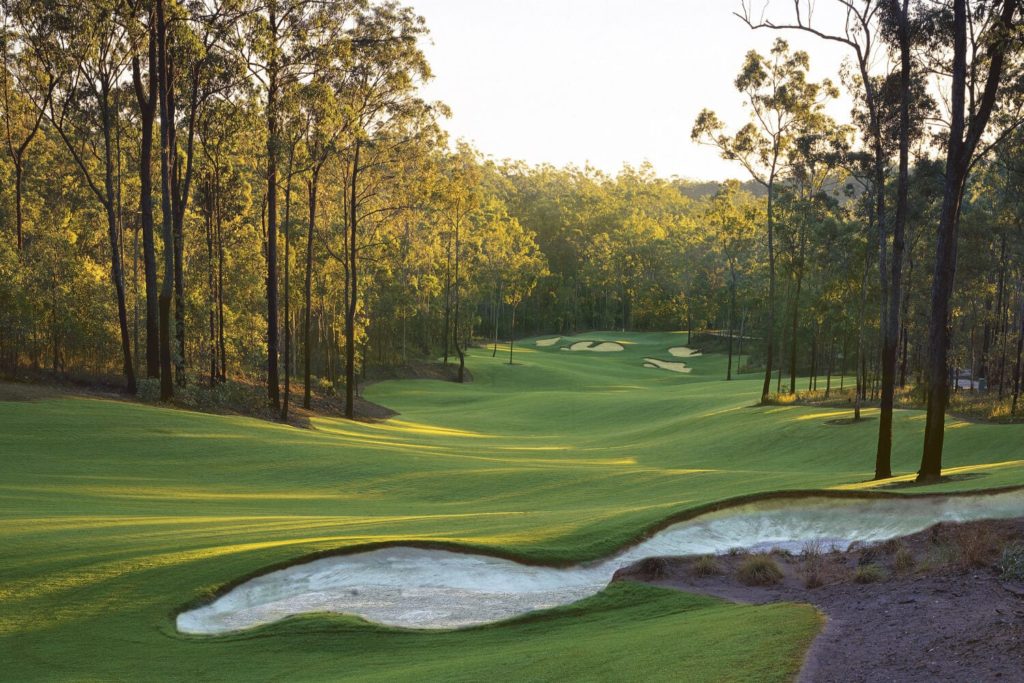Golf Course Maintenance Cost…Optimizing In a New World

As featured in Golf Industry Central
A PERSPECTIVE FROM TROON INTERNATIONAL’S DAVID LUNARDELLI
Everyone’s needs and abilities are different so the first question really is; how good do you have to be in order to be successful in your market and/or to meet the demands of your ownership, members and guests?
The second question then is how much should be spent to achieve this level? When we are asked this question, it evokes a thought process that must be worked through to find the correct answer. Covid-19 lockdowns and the current economic situation have made us all take a very good look at how we operate on a daily basis, it has been a time to reflect and if used constructively can be a catalyst for positive change.
 When Troon was asked to write about optimizing golf course spending many thoughts came to mind, but as a golf course management company and advisor to many golf course owners and boards around the world this question is truly in our wheel house.
When Troon was asked to write about optimizing golf course spending many thoughts came to mind, but as a golf course management company and advisor to many golf course owners and boards around the world this question is truly in our wheel house.
Our success is based on being as efficient as possible by utilizing our corporate oversight, collective knowledge, programs and buying power, if we can’t optimize our resources we wouldn’t be hired. With this said, there are though a common set of factors that can be applied to everyone’s situation.
So, let’s go through this thought process one factor at a time:
Golf Course Construction/Infrastructure:
There is no doubt a well-built golf course is by far more cost-effective in the long-term than a poorly built one. Poor construction standards and inconsistencies across a golf course is a guaranteed way to eat up valuable time and efforts…maintenance staff will continuously be chasing issues or trying to repair something. Irrigation design and installation is unfortunately one of the areas we see fall short more often than not, irrigation has without doubt been the greatest influence on golf course conditioning and can be costly to rectify later on. As the global weather patterns change and we see longer wet periods, along with longer dry periods, irrigation will continue to be an issue in every corner of the world.
So, if you are building something new or undertaking a renovation it is always best to plan well in advance and begin with the end destination in mind. Our best built golf courses are by far the most efficient to maintain and are consistently in the best condition on a daily basis.
Long-term Turfgrass Health:
Ensuring the long-term health of the golf course should be at the forefront of your mind. It is important to prevent deferred maintenance occurring which can result in large costs down the road or a poor quality product. Adequate fertility and weed control are just some of the immediate factors with the long term goal always at the forefront of decision making.
Time Allocation:
There are only so many hours in the day and only so many associates to put in these hours. It is important to look at every task you do, how much time is spent on it and assign a value accordingly. Some examples include:
Bunkers:
Bunker maintenance consumes a considerable amount of time and whilst a highly criticized part of the golf courses it may not always be the best use of your time for your facility. Ask yourself do they need a full rake or is spot raking sufficient? As a side note less bunker rakes on the golf course following COVID precautions are making mowing and bunker raking more efficient…not to mention the pace of play faster!

Maintained Areas & Mowing Frequencies:
Assess the areas that are mowed regularly whilst also considering the optimum frequencies. Many times we can reduce the maintained areas because they are not in play…for example ask yourself do you need to maintain so much grass around those tees?
Aeration:
Annual cultural practices are another good one; why do you aerate your greens? Be sure you are doing it for the right reasons and not just because you always have or everyone else is doing it. See Data-Driven Decision-Making below for some guidance on this.
Product Selection:
It does not take a great number of products to maintain a golf course and many times agronomic programs are more complicated than they need to be. We are inundated with product options today and while new technology can help us, the requirements for growing healthy turfgrass are really quite straight-forward. Use science in your decision making through water and soil testing, same applies for disease prevention as the small cost for accurate analysis can far out way a scatter gun approach. So take some time to review all the products you currently use, understand the key elements (sources of nitrogen for example), how they function and ensure they are really needed. Many times agricultural grade fertilizers are sufficient and can easily be dissolved for liquid applications. Consider buying in bulk to save money.
Equipment Maintenance:
Carefully consider your placement program, our preference is for annualized leasing vs. outright purchasing. Holding onto equipment too long can have a huge impact on performance, running costs and down time which ultimately effects course conditioning. Consider the appropriate equipment for the task; quite often this is overlooked with larger mowers or newer models, creating greater efficiencies.
Site Specific Management:
Identify the isolated needs of the golf course and do not take a blanket approach to everything you do. Yes it takes some time to do this but if not it can be inefficient and costly. This approach will also be important in helping you achieve better consistency across your golf course. Ask yourself do those back tees that are seldom used and high in thatch need to be fertilized like the other high use tees?
Open Your Eyes:
Every day on the golf course is a new day, it should be seen as another day to find opportunity for change and improvement. Look for the issues, ask yourself is that normal, why is it like that? Many times parts of the golf course have become overgrown and site-lines lost, perhaps there is a dry or overly wet area where a sprinkler is underperforming due to poor pressure or worn nozzles.
Data-Driven Decision-Making:
Today we are in a world of data and we should use this in daily golf course maintenance as well. Soil Testing, Clipping yield, Growth Potential, Organic Matter are all great examples of this. Data allows us to make informed decisions that will ensure only necessary expenditure; what is the growth rate at the moment, and do I need to fertilize? What are the organic matter levels and do I need to aerate? These are all questions we have to ask ourselves regularly.

Quality of Work:
When any task is undertaken, do it to a high standard, if not it is not usually a good use of time and money. At the same time perfection may never be achievable so fully identify and agree with all stakeholders on the standards that are required for every part of the golf course, and communicate these effectively to your team. A team that understands this will always give their best and be a happier team.
Associate Model:
As we know maintaining a golf course during play is very inefficient and lessens the golfer experience. Look at your associate model and see how you can restructure accordingly to get daily preparation complete early in the morning. A part-time associate structure is great for this and can be made up of students in the summer, retirees or others than only want to work mornings due to other commitments. A split-shift model is also a great way to schedule around the busy periods on the golf course.
A Competent Team:
It is very important to invest time into your team, a well-trained team is an effective and efficient team but also a happy team. At Troon we have a full set of training programs for our facilities, implemented both at a facility level and from a corporate level. This has been an essential part of growing and developing excellent talent.
Outsource Infrequent Work:
If you have a small crew running very efficiently, it can be hard to fit in aeration programs and other seasonal tasks. Outsourcing this work to specialist companies with high quality, efficient equipment, can be a great alternative to doing it in-house. You also then avoid having expensive equipment sitting doing nothing most of the year. At Troon we have now developed this service in certain regions given the benefits it brings to our facilities.
Communication:
This word comes up as being critical in everything we do in life and it is no different out on the golf course. Be sure to communicate to all stakeholders what you are doing on the golf course and why, at the same time keep listening and try to filter out any un-constructive feedback.
Light at the End of the Tunnel:
As we are nearing a gradual easing of the COVID-19 crisis, Troon, with a carefully measured re-opening of facilities is seeing a return to “normal” business. During these unprecedented times, a true test of the value of Troon and its policies, procedures, and practices starts to become evident. None of which of course can be implemented without the dedication and drive of each of our leaders in the field. It has been amazing to see the depth of ingenuity and creativity that this situation has required, “of which” many will certainly remain in place long after the “cure” for this virus has been found.